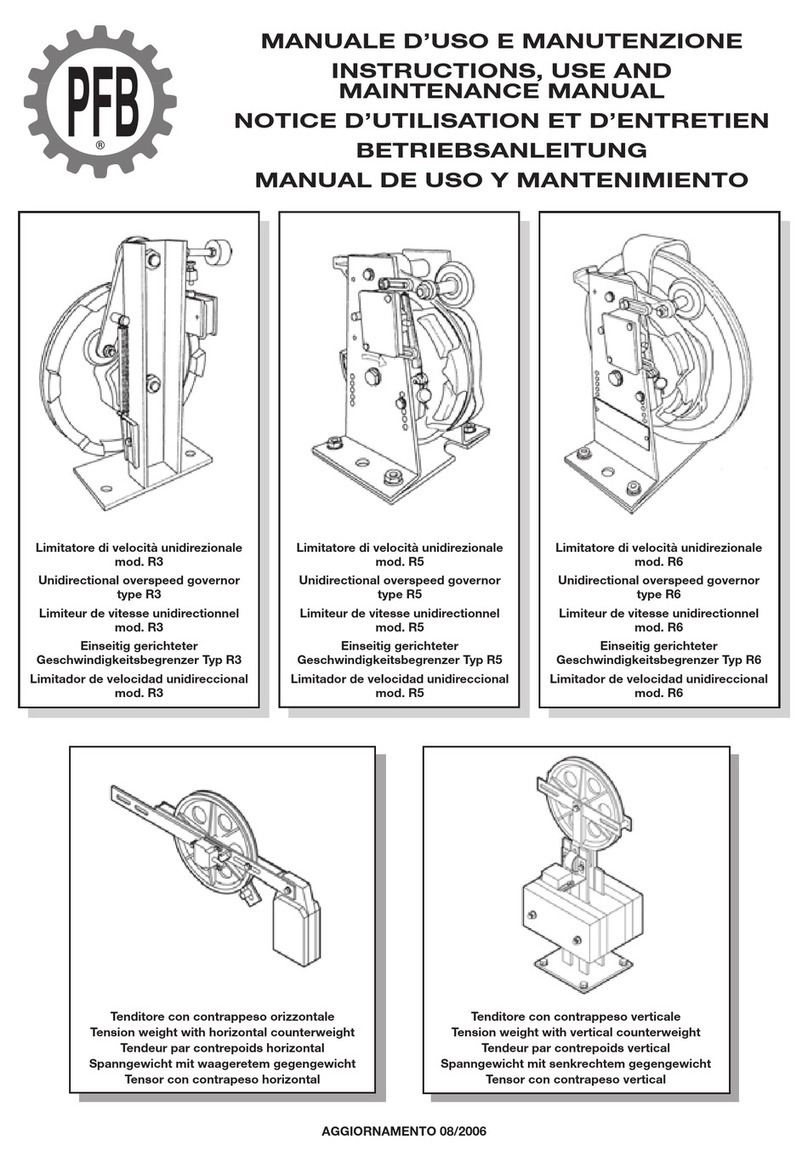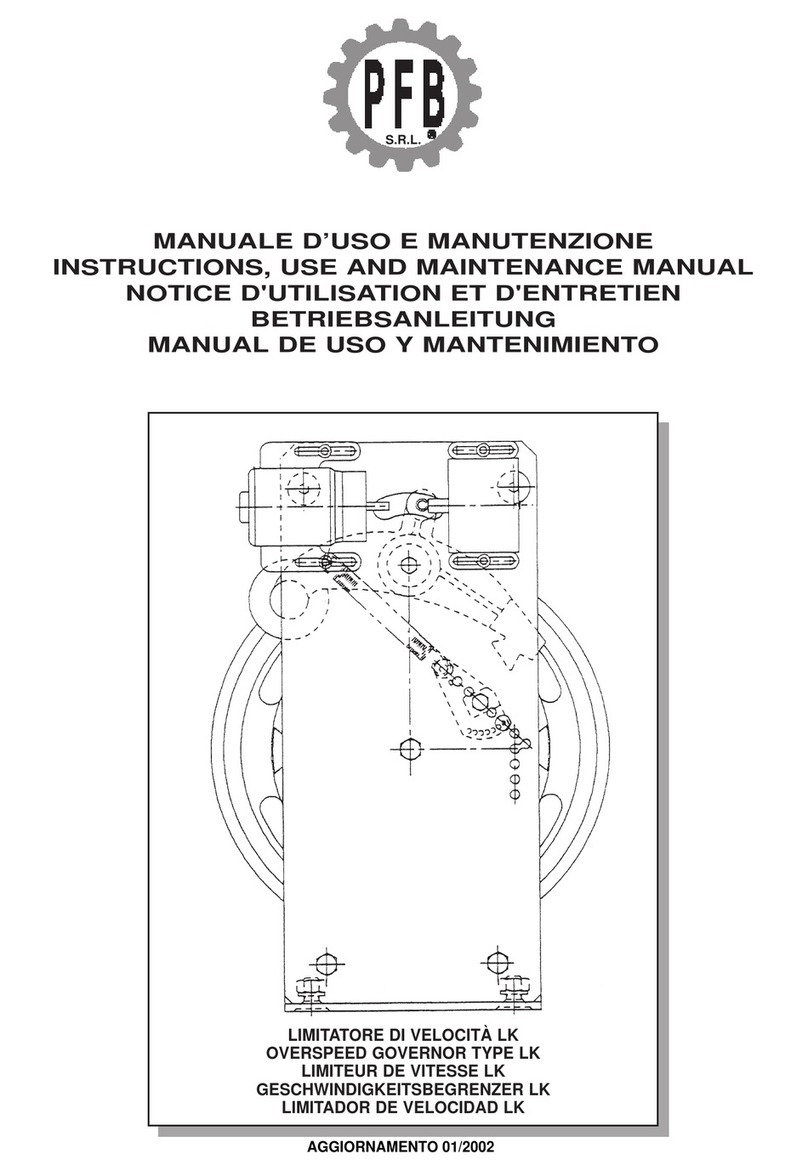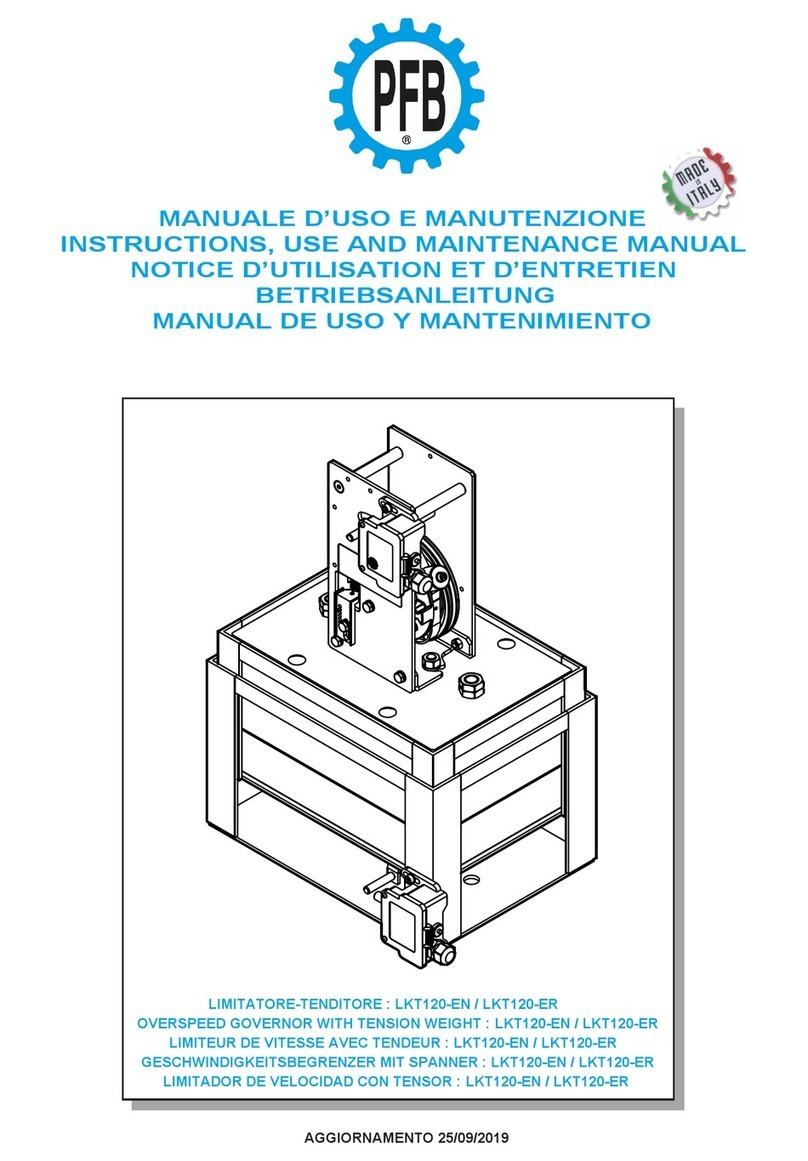6
7
4
3
5
2
1
8
1.1.2 DESCRIZIONE, MODO DI FUNZIONAMENTO
l limitatore di velocità è un dispositivo di sicurezza che viene messo in funzione in caso di superamento della
velocità ammessa della cabina dell’ascensore.
Nel caso in cui la cabina dell’ascensore, durante la corsa in salita o in discesa, superi la sua velocità nominale
ammessa fino al raggiungimento della velocità di intervento, il limitatore di velocità si innesta e fa scattare,
sulla fune del limitatore, un dispositivo frenante, più precisamente il paracadute, che è posizionato sulla
cabina dell’ascensore. La cabina si arresta e viene trattenuta dalle guide.
Lo stesso limitatore di velocità (Fig. 1) è costituito da una puleggia con:
• Ruota del limitatore (1) con gola trapezoidale con scarico, per alloggiare la fune del limitatore;
• Gola di prova per test di funzionamento;
• Corona a camme (2);
• Eccentrico di arresto (3).
La fune, bloccata sulla tiranteria di innesto del paracadute e tenuta tesa da un peso, aziona la ruota del
limitatore (1) tramite la pressione della fune nella gola trapezoidale con scarico.
Oltre alla gola trapezoidale, viene inoltre montata, sulla ruota del limitatore,
una corona a camma (2) con eccentrico di arresto (3). Detta corona fa
funzionare il pendolo (4) per mezzo di una carrucola montata su di un
cuscinetto a sfera, con moto oscillatorio verso l’alto e verso il basso.
l pendolo viene tirato alla corona a camme tramite una molla di trazione
precaricata, corrispondente alla velocità di intervento prevista.
Con il raggiungimento della velocità di intervento, l’ampiezza del pendolo
diventa così grande, che l’innesto a denti frontali oscillante (5) incontra la
guida periferica dell’eccentrico di arresto e vi viene bloccata da una camma.
Un perno d’acciaio (6) applicato sul pendolo aziona, prima del bloccaggio
meccanico del pendolo, l’interruttore di sicurezza (7). n tal modo, si
interrompe la corrente di comando dell’impianto.
n conseguenza al suo montaggio nel pozzo dell’ascensore, il limitatore di velocità deve
essere dotato di comando a distanza, oppure deve essere facilmente accessibile
dall’esterno (ad es. tramite una porticina di manutenzione).
Per mezzo di un tasto, il comando a distanza (fig.2, pos.8) provoca l’innesto del pendolo su percorso
elettromagnetico nella scatola dell’interruttore stesso.
limitatori di velocità dotati di comando a distanza facilitano i controlli di funzionamento.
limitatori di velocità possiedono l’omologazione in conformità alla Direttiva per ascensori 2014/33/UE, con i
seguenti numeri della prova di omologazione EU:
• LK 120 : TÜV EU-OG 280
Fig. 1
n caso di utilizzo su
nuovi impianti in
conformità a quanto
richiesto dalla normativa
Europea per il movimento
incontrollato di cabina, il
limitatore può essere
fornito completo di un
dispositivo elettro-
magnete in combinazione
con il relativo
alimentatore o senza; per
il funzionamento e
l’utilizzo dei dispositivi di
cui sopra si deve fare
riferimento allo specifico
libretto d’uso e
manutenzione fornito
separatamente.
Fig. 2
Limitatore
di velocità
con
comando a
distanza
Fig. 3
Limitatore di velocità
con dispositivo per
movimento incontrollato
di cabina
Fig. 3
8































